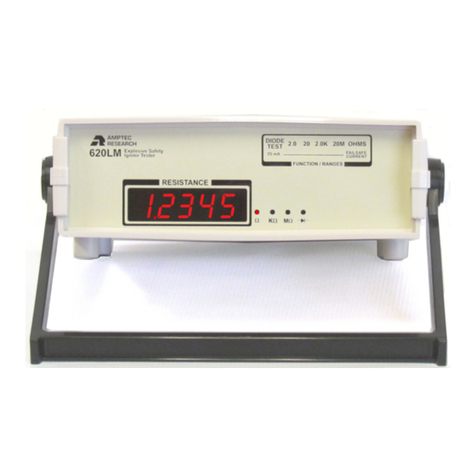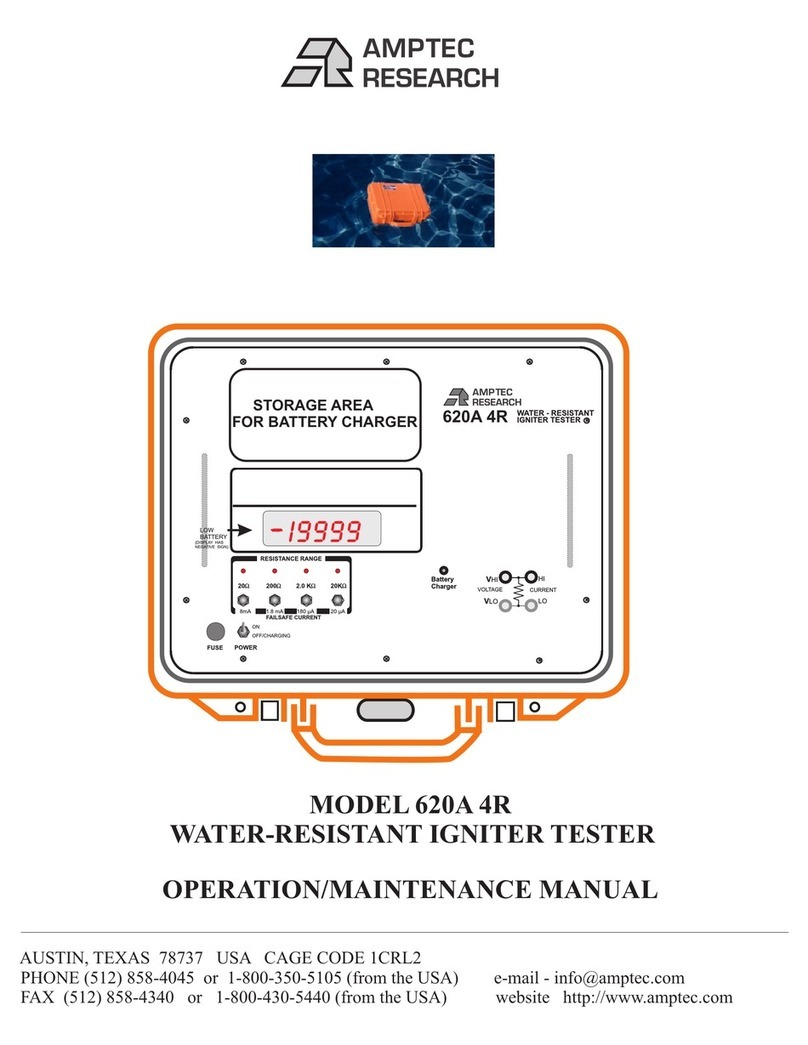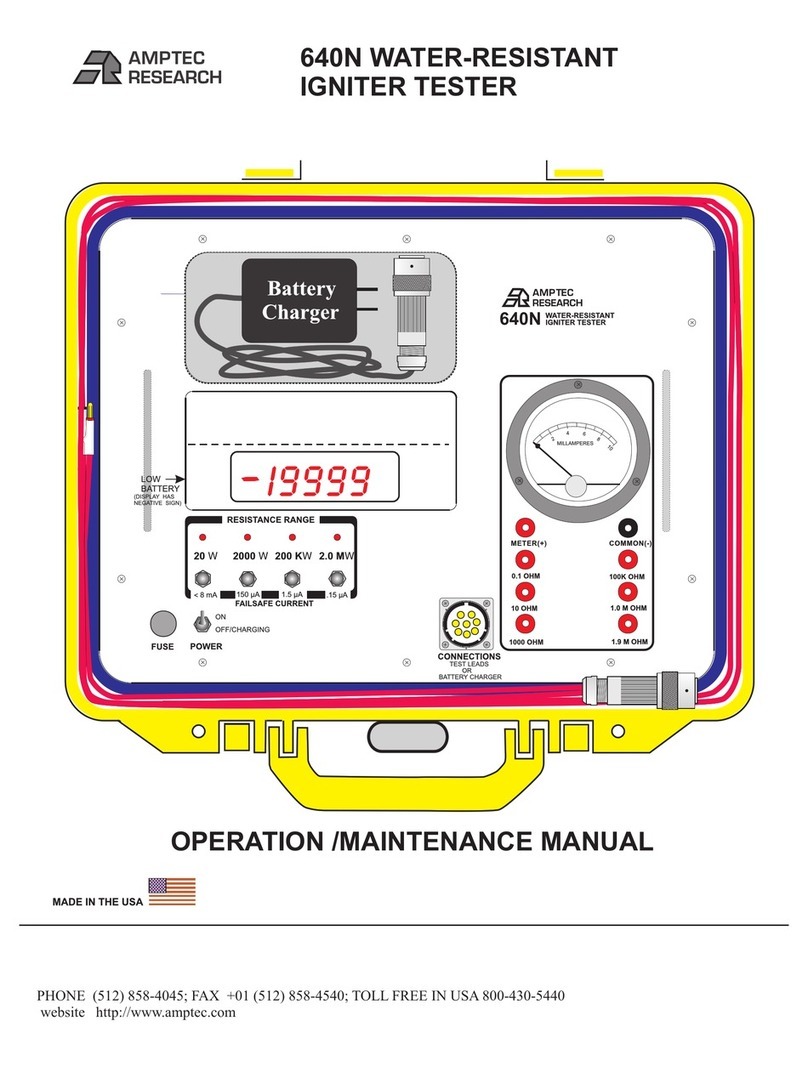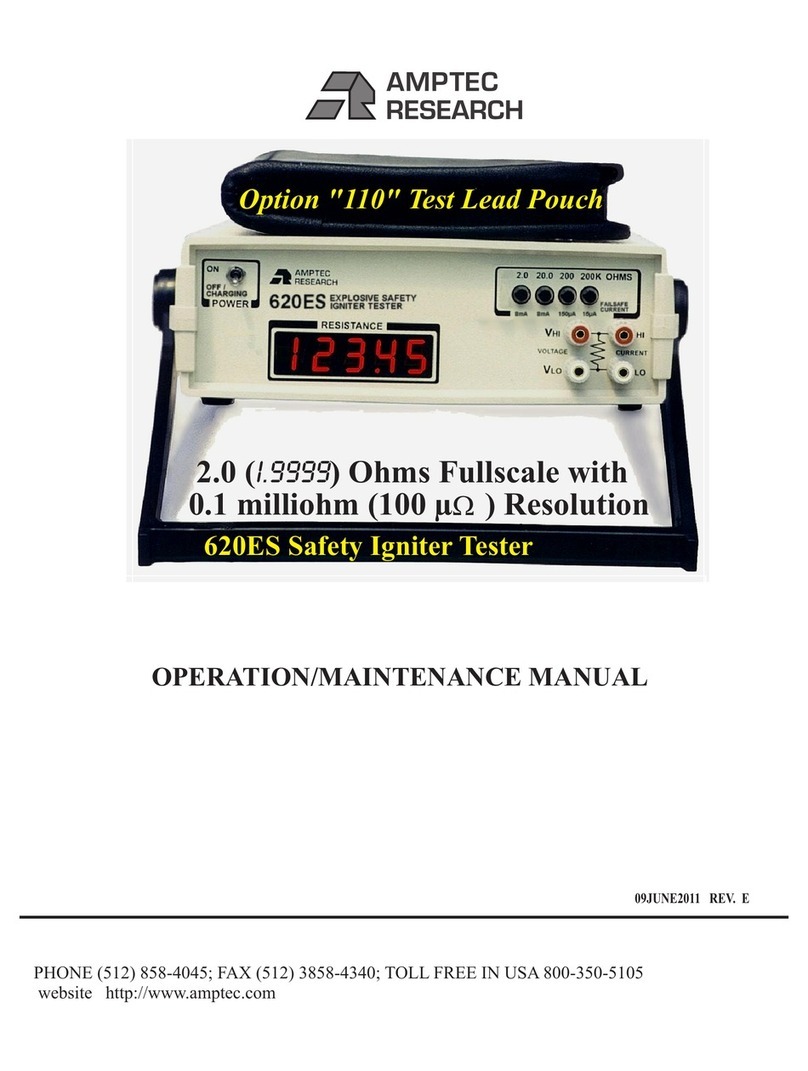
A-1. Introduction to the AMPTEC 620VN
Some of the devices the 620VN Igniter Tester may
be used on include: fuses, squibs, igniters,
explosive bolts, rocket motor squibs, automobile
air-bag initiators and many others.
The AMPTEC 620VN is a 4-wire failsafe digital
ohmmeter which has been designed to reliably
use very low test currents for its resistance
measurement. Failsafe Output Circuitry
proprietary to AMPTEC RESEARCH ensures
that test current levels do not exceed the
specified "failsafe current" even in a worst-case
component failure situation. The failsafe feature
is tested in every instrument before shipment.
The 620VN uses the same main printed circuit
board (PCB) as all of the AMPTEC 620A Igniter
Testers. The 620VN has many features (no
resistance range gaps form 20 ohms to 2.0
megohms) which make it useful in a variety of
applications. Please check the last chapter of this
manual for addendums that may apply to the
AMPTEC 620VN .
For added safety the AMPTEC 620VN Igniter
Tester is always electrically isolated or
electrically "floating". It normally comes
configured with the 2 stage option “247”
Isolated Continuous Operating power. The first
stage of isolation with op “247” is the ACV wall
adapter (ie 120 VAC input to 24 VDC output).
This provides the first stage of initial high
frequency and high voltage (transient)
suppression.
(OP 247 ) The second stage of isolation uses,
converts, isolates and conditions the +24 VDC
coming into the meters rear panel. The rear
panel input voltage (+24 VDC) is converted (via
several circuits) using a Medical Grade DC to
DC convertor into the +5.0 VDC that provides
the meters main operating power. The high
quality Medical grade DC to DC Convertor uses
essentially transformer isolation and voltage step
down principals to provide the meters main
power as a “floating” +5VDC. A 3000 VAC
Isolation (Hipot) Test Report is available from
AMPTEC’s engineering department that has
established the isolation of the 2 stage “OP247”
as being at least Isolated to the 3 KV level.
A-2. Receiving, Unpacking
and Initial Inspection
Should the AMPTEC shipping box appear
damaged upon arrival, request that the carrier's
agent (i.e. UPS) be present when the unit is
unpacked. If the 620VN appears damaged, the
carrier's agent should authorize repairs before
the unit is returned to the factory. Even if the
instrument appears undamaged, it may have
suffered internal damage in transit that may not
be evident until the unit is operated or tested to
verify conformance with its specifications.
If the unit fails to operate or
fails to meet the performance
specifications of Section B,
notify the carrier's agent and
the nearest AMPTEC Sales
Office. Retain the shipping carton for the
carrier's inspection. DO NOT return
equipment to AMPTEC RESEARCH or any
of its sales offices without first obtaining an
(RMA) Return Material Authorization number.
We need to know who to contact and how to
contact (i.e. phone number and FAX number) in
order to properly coordinate the return of the
repaired AMPTEC product.
Call AMPTEC RESEARCH first, prior to
just returning the 620VN . We can often
troubleshoot (based on the symptoms you
describe) and identify the problem. We may
possibly be able to fix the problem over the
phone and prevent you from having to return the
unit to AMPTEC for repair.
A-3. Setup and Use
The AMPTEC 620VN Igniter Tester may be
setup to operate within minute(s) of power "turn
on" (unless your in an extremely cold tempera-
ture - allow more time for warm-up - 15 min-
utes). A quick test lead integrity check and it
should be ready to use. The front panel will
display a negative or minus sign Avoid expos-
ing the AMPTEC 620VN Igniter Tester to
extremes of temperature which will affect accu-
racy.
SECTION A - RECEIVING AND INITIAL INSPECTION
R M A
page 4
































